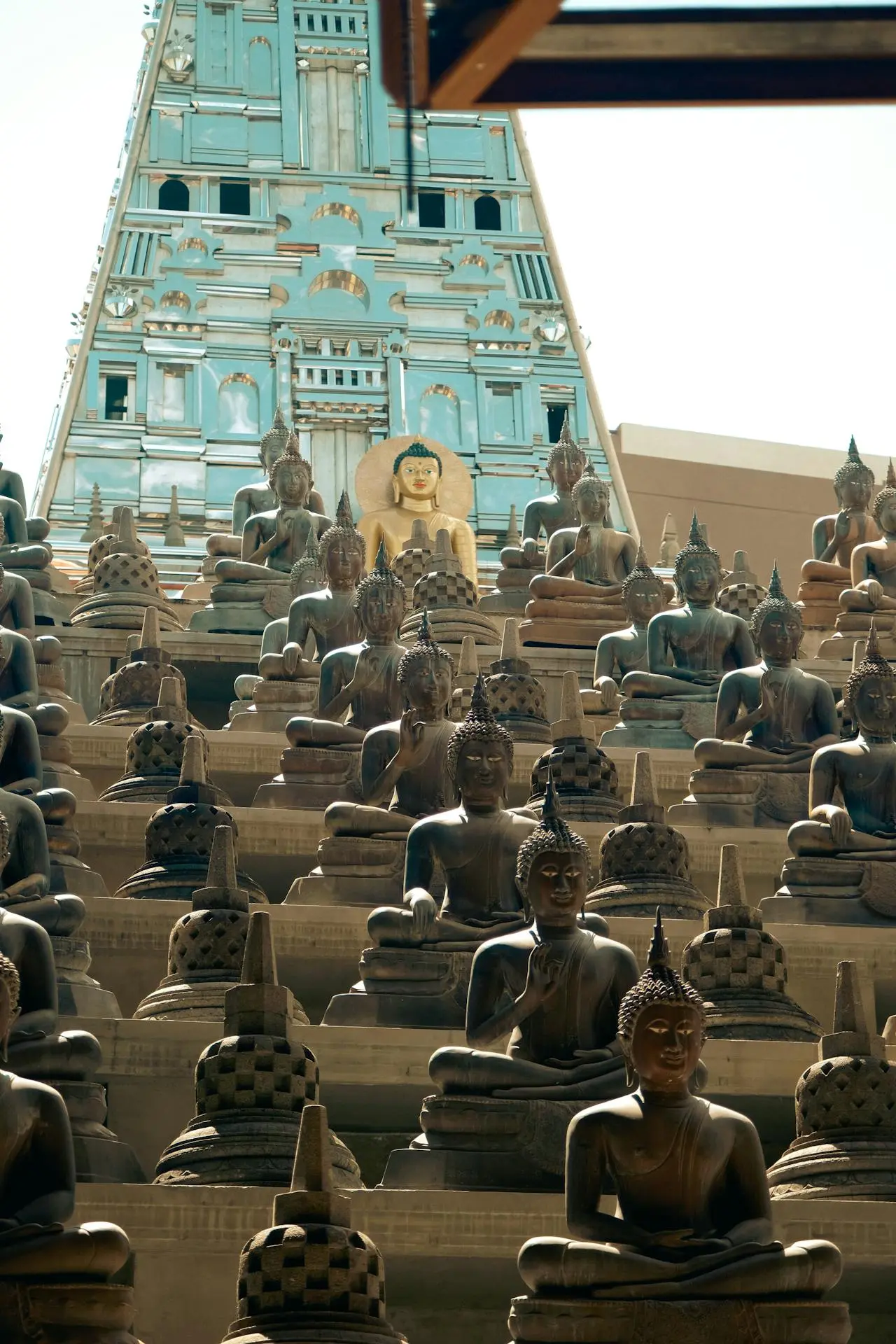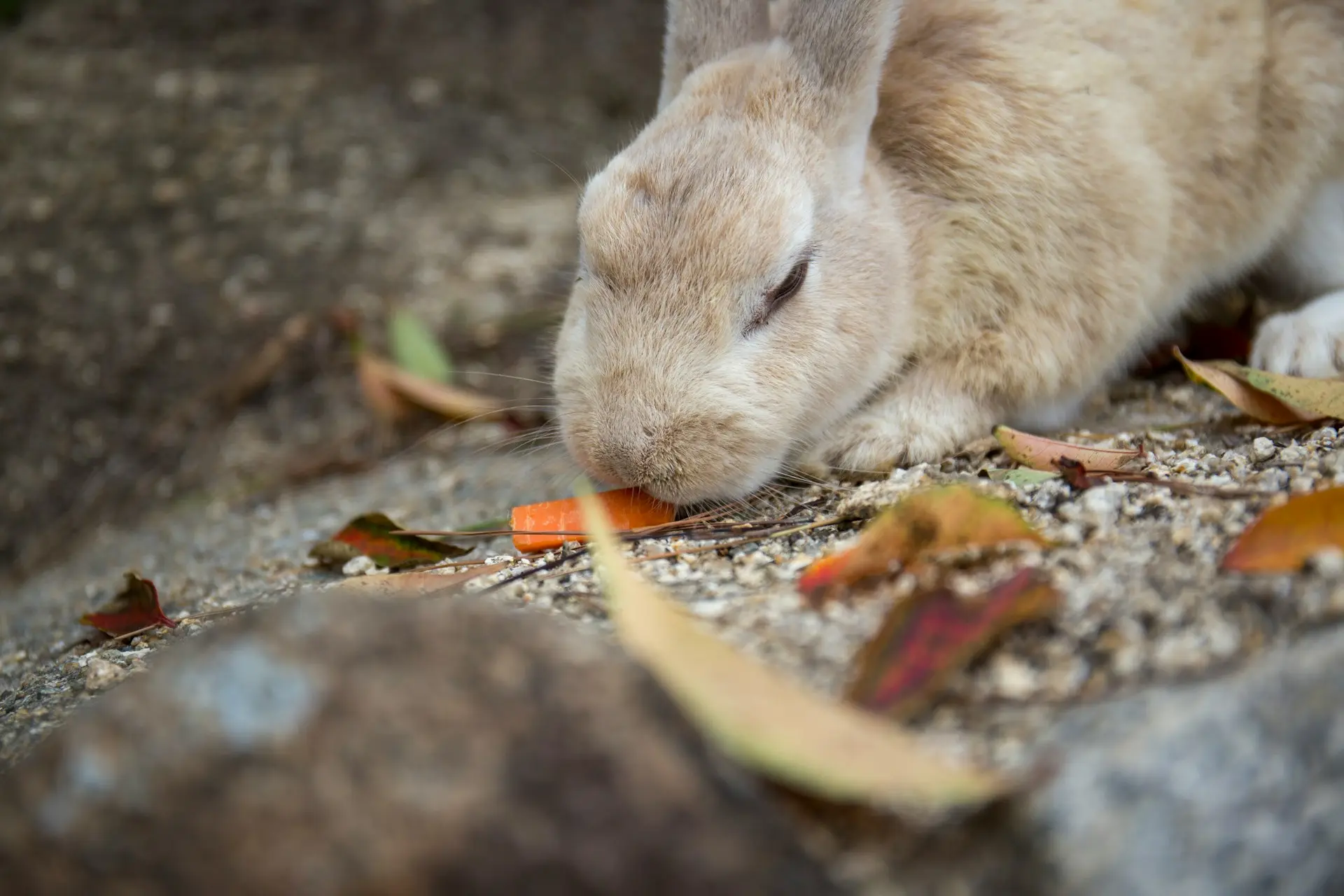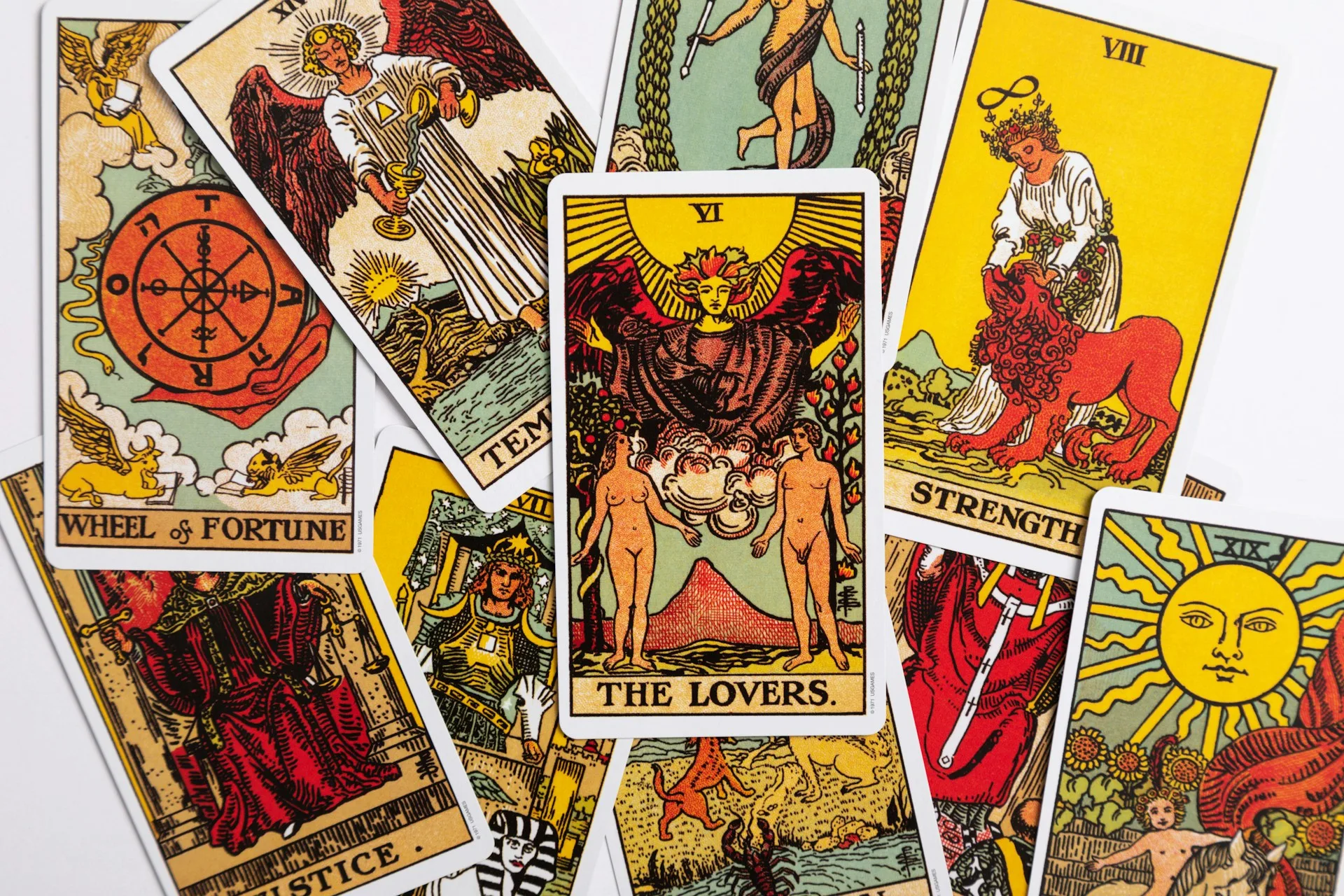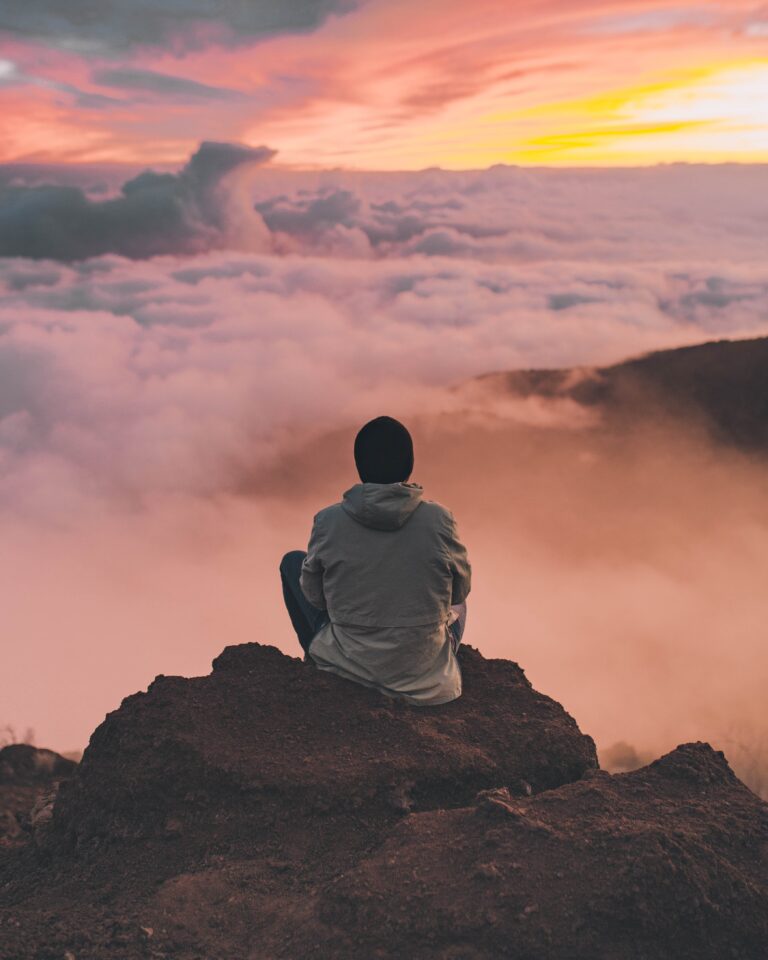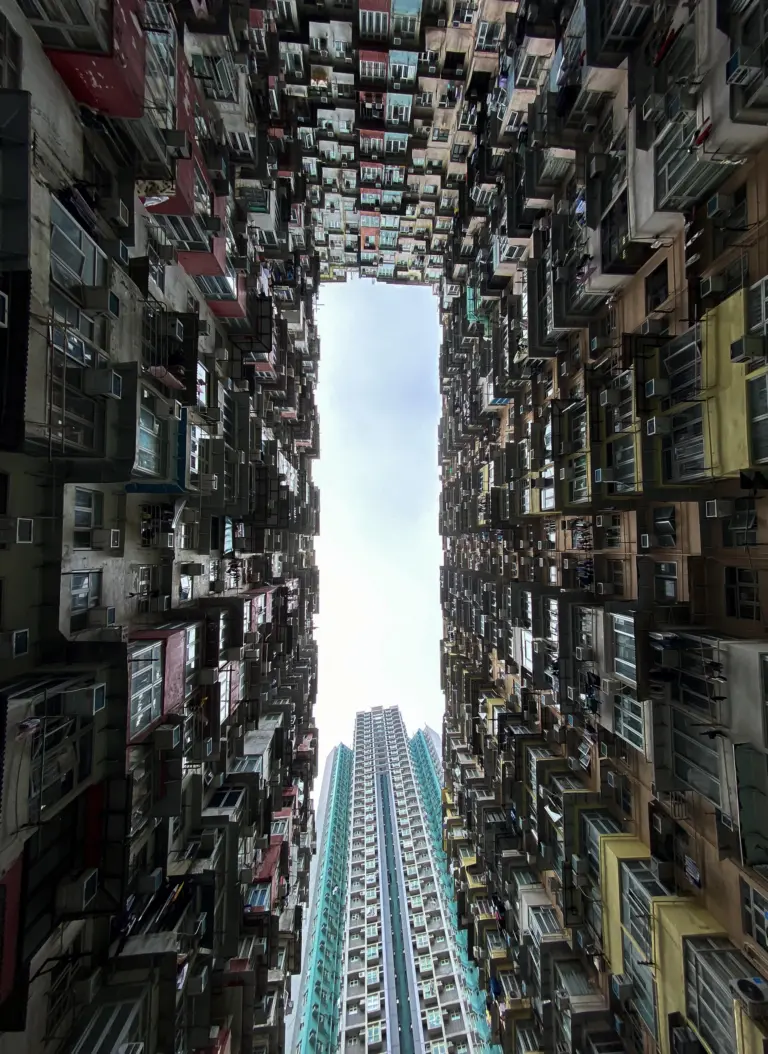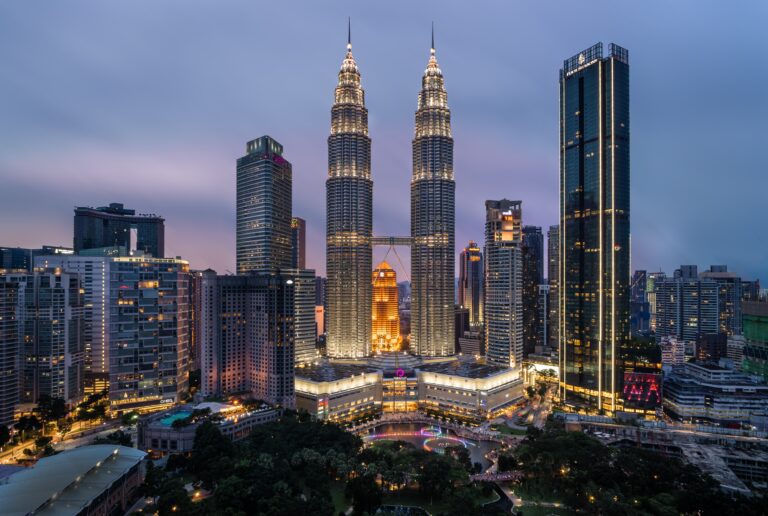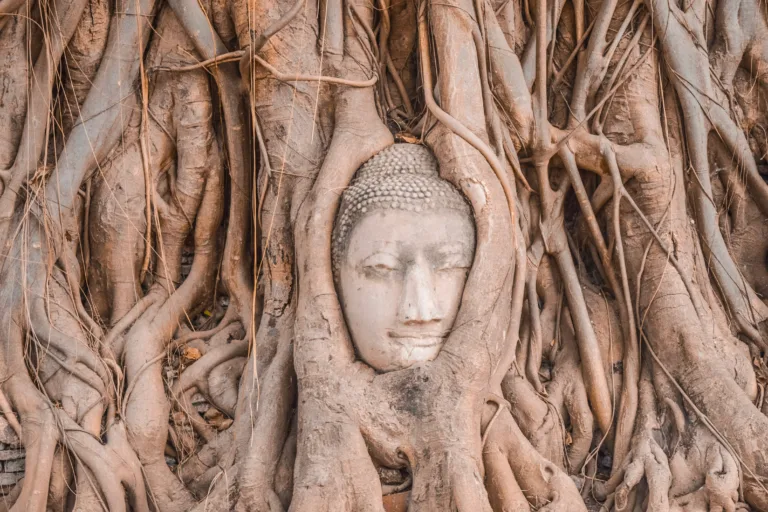Seoul stands as a harmonious blend of the old and the new.
In one moment, you can be lost in a traditional Hanok village, feeling the weight of centuries underfoot. In the next, you’re propelled into the future amidst neon lights and cutting-edge technology.
The city, much like a wise old storyteller, has countless tales to share. As you journey through its alleys, markets, temples, and towers, remember that every stone and every corner holds a piece of Seoul’s magnificent soul.
To know Seoul, is to know the heart of Korea.
Table of Contents
Toggle
History of Seoul
Before it became the megacity we know today, Seoul was a simple settlement on the banks of the Han River. Archaeological evidence indicates that people have lived here for over 2,000 years!
The first known kingdom to have its capital here was Baekje, one of the Three Kingdoms of Korea, which established its seat of power in the area in 18 BCE.
But Seoul’s true claim to historic fame began in the late 14th century when it became the capital of the Joseon Dynasty. King Taejo, the founder of the dynasty, recognized the strategic and symbolic value of the area, renaming it “Hanyang”.
The city also faced numerous challenges, from the Japanese invasions in the late 16th century to the Manchu invasions in the 17th century. Yet, despite the sieges and occupations, Seoul always found a way to rebuild and redefine itself.
Fast forward to the 20th century, following the end of World War II and the Korean War, Seoul began its rapid ascent into modernity.
From the ruins of war, Seoul transformed into a global powerhouse, a journey which in itself is nothing short of miraculous. By the 1980s and 1990s, skyscrapers began to dot the skyline, and the Han River became a vibrant hub of recreation.
South Korean Culture Overview
South Korean culture is full of rich concepts and traditions!
Take for example, the idea of “Jeong” which speaks to the deep connections people share. This connection is often felt when friends and family gather around a bowl of “Kimchi jjigae,” a hearty and spicy vegetable stew.
And it’s not rare to see someone in a Hanbok, the country’s traditional dress, during such gatherings. The Hanbok, with its rich colors and elegant design, is a symbol of Korean heritage.
Hungry for more insights? Unpack the complexities and charms of South Korean culture in an in-depth blog post.
Best Places to Visit in Seoul

1. Namsan Tower
Perched atop the Namsan Mountain, the N Seoul Tower, often referred to as Namsan Tower, is a window to the vast, sprawling beauty of Seoul. From the moment you set foot on the cable car or choose the invigorating walk up the mountain, you’re in for an experience that combines nature, cityscape, and a touch of romance.
The tower which stands at a majestic height of 236.7 m (776.5 ft), offers a panoramic view of the capital city that seems to unfolds before your very eyes.
For those with a romantic inclination, the fence filled with countless “love locks” is a must-see. Couples from all over the world come to attach padlocks as a symbol of their enduring love, throwing the key away to signify an unbreakable bond.
Cost: 21,000 KRW

2. Gyeongbokgung Palace
Established in 1395 by King Taejo, Gyeongbokgung was the primary palace of the illustrious Joseon Dynasty. The name “Gyeongbokgung” translates to “Palace of Shining Happiness,” and true to its name, the palace grounds exude a sense of majesty and tranquility.
The palace comes alive with its “Changing of the Guard” ceremony, a colorful spectacle that replicates the royal traditions of the past.
Walking through Gyeongbokgung, you’ll also come across the National Folk Museum of Korea. Here, the lives of ancient Koreans are beautifully portrayed, from their daily routines to their spiritual beliefs. It’s a fascinating dive into the customs that have shaped the nation.
Cost: 3,000 KRW

3. Bukchon Hanok Village
Bukchon Hanok Village is like a beautifully preserved traditional village.
The word “Hanok” refers to traditional Korean houses, and as you wander through the village’s winding alleyways, you’ll be greeted by rows of these well-preserved homes. With their iconic curved roofs, wooden beams, and inner courtyards, you can learn more about the rich culture of Bukchon Hanok Village in the linked blog post.
While many of these homes remain residential, a number have transformed into quaint guesthouses, artisanal workshops, teahouses, and cultural centers. Some which allow you to don on traditional clothing so you can explore the village in style!
What’s particularly enchanting about Bukchon Hanok Village is its vantage points. From various spots, you can catch glimpses of modern Seoul’s skyline juxtaposed against the village’s traditional architecture.
You can join a guided walking tour for both Gyeongbokgung Palace and Bukchon Hanok Village through this tour.

4. National Museum of Korea
The National Museum of Korea in Seoul is the country’s premier institution showcasing its rich history and culture. Located in Yongsan-gu, this vast museum is home to over 220,000 artifacts, making it one of the most extensive collections in Asia.
One of the museum’s primary sections, the Ancient History Gallery, offers insights into Korea’s earliest civilizations with relics dating back to the Paleolithic era.
The museum also boasts an impressive Painting Gallery. Among its treasures is the “Portrait of Yi Je-hyon,” a piece of the 16th-century that showcases the delicate nuances of Korean portraiture.
For a comprehensive understanding of Korea’s past and its evolution, the National Museum is a must visit!
Cost: Free

5. Dongdaemun Design Plaza (DDP)
The Dongdaemun Design Plaza, commonly known as DDP, is an architectural marvel designed by the world-renowned architect Zaha Hadid, the structure itself is an amazing marvel with its sleek, neo-futuristic curves and lack of a single straight line or even a flat surface.
The plaza also hosts a myriad of exhibitions, fashion shows, forums, and conferences. Among its most notable events is the Seoul Fashion Week, which turns the DDP into a vibrant runway where established and emerging designers display their latest collections.
Cost: Free
6. Jogyesa Temple
Established in the late 14th century, Jogyesa is the chief temple of the Jogye Order of Korean Buddhism.
The temple’s main hall, Daeungjeon, is bound to capture your attention with its intricate wooden carvings, colorful murals, and a golden statue of Shakyamuni Buddha.
The temple regularly hosts the Lotus Lantern Festival, an event celebrated in honor of Buddha’s birthday. During this festival, the temple and its surroundings come alive with thousands of colorful lanterns, traditional dance performances, and parades, offering a vibrant spectacle.
Cost: Free

7. Leeum Samsung Museum of Art
Founded by the Samsung Foundation of Culture, the Leeum Samsung Museum of Art seamlessly bridges the age-old traditions of Korean art with the avant-garde creations of contemporary times.
Museum 1 is primarily dedicated to traditional Korean art. This museum holds some of Korea’s National Treasures, including a 10th-century gilt-bronze seated Buddha and the iconic white porcelain moon jars.
Transitioning from the past, Museum 2 catapults you into the world of contemporary art. This section of the Leeum showcases an eclectic mix of pieces by both Korean and international artists. Names like Damien Hirst, Jean-Michel Basquiat, and Yayoi Kusama punctuate the collection, making it a hotspot for modern art aficionados.
Cost: 10,000 KRW
Highly Rated Tours in Seoul
If you’re looking to meet some new people while enjoying the sights, here are some of the best tours in the city that offers just that:
- Han River Night Cruise – Immerse yourself in Seoul’s nightlife at Han River Park, exploring Korean culture, games, and food. Discover the city’s history and skyline on a cruise with optional pre-book tickets, and enjoy a picnic.
- Dark Side of the City & Ghost Stories Walking Tour – Discover Korea’s dark history and ghosts. Explore the dark alleys, listen to stories from folklorists and historians. Learn what you will not hear anywhere else. What (or who) lies under the concrete?
- Seoul Guided Foodie Walking Tour – Eat your way around Seoul on this guided foodie walking tour. Feast on freshly made dishes like tteokbokki, smoky rice cakes, mini rice rolls and dumplings, and top it off with a special secret dish.
- Myeongdong Nanta Theatre Show – Experience the drama and comedy of South Korea’s longest-running theatrical performance and marvel at the energetic culinary skills of the must-see Nanta show.
- Korean Cooking Class at a Local Home & Market Tour – Learn how to cook authentic Korean dishes with your experienced chef-guide in Seoul. Join this fun cooking class and bring back Korean recipes and newly acquired skills.
Hidden Gems in Seoul

8. Changdeokgung Palace
Built in the early 15th century during the Joseon Dynasty, Changdeokgung stands as one of the “Five Grand Palaces” of Seoul. But what sets it apart is its harmonious integration with the natural landscape, earning it a coveted spot on UNESCO’s World Heritage List.
Don’t miss the Injeongjeon Hall, the palace’s main throne hall, it was here that major state affairs, including the coronation of kings, were held.
Yet, the true jewel of Changdeokgung is arguably its rear garden, Huwon. Often termed the “Secret Garden,” Huwon is a splendid 78-acre expanse of ponds, pavilions, and wooded areas. The garden was a private retreat for the royal family, a place of leisure and meditation.
Cost: 3,000 KRW
9. Gyeongui Line Forest Park
In a city where every corner pulses with energy, Gyeongui Line Forest Park offers a breath of fresh air, literally and metaphorically.
This linear park, stretching over 6 km (3.7 mi), is a delightful transformation of the old Gyeongui railway line that once connected Seoul to Sinuiju, near the North Korean border.
The history of the park is a tale of rejuvenation. Where trains once thundered, now families picnic, artists sketch, and couples stroll hand-in-hand. The remnants of the railway tracks are still embedded in parts of the park, these tracks are flanked by pathways lined with a variety of trees, shrubs, and colorful flowers that change with the seasons.
There’s also the book street, filled with quaint cafes and bookshops, providing a cozy haven for bibliophiles.
Cost: Free

10. Deoksugung Palace
Among the “Five Grand Palaces” built by the Joseon Dynasty, Deoksugung means “Palace of Virtue and Longevity.”
As you tread along the palace’s stone-paved courtyard, Jeonggwanheon Pavilion draws attention with its European-style columns and ornate details. Built in 1900, this was the first Western-style structure in the palace, where Emperor Gojong enjoyed his leisurely moments sipping coffee and hosting foreign envoys.
Cost: 3,000 KRW
Top Things to Do in Seoul

12. Shop til you Drop at Gwangjang Market
Gwangjang Market offers an authentic shopping experience that’s hard to rival. Established in 1905, it’s one of Korea’s oldest traditional markets, brimming with an eclectic mix of stalls that capture the city’s vibrant spirit.
Walking through its bustling lanes, the cacophony of vendors calling out their specials and the rich aroma of street food create an atmosphere that’s as intoxicating as it is inviting. From vintage clothing and intricate jewelry to traditional Korean fabrics and handcrafted souvenirs, Gwangjang is a treasure trove waiting to be explored.
But perhaps what Gwangjang Market is most renowned for is its food. As the evening dawns, the market transforms into a gastronomic haven. Rows of food stalls offer a dizzying array of Korean delicacies. Among the must-tries are “bindaetteok,” savory mung bean pancakes fried to a crisp golden brown, and “mayak kimbap,” bite-sized seaweed rice rolls so addictive, they’re humorously dubbed “drug kimbap!”

13. Hunt for Street Art at Ihwa Mural Village
Ihwa Mural Village, a canvas of color, was initiated in 2006 as part of a revitalization project, local artists were commissioned to splash their creativity across walls, stairs, and even rooftops, bringing new life to this once-aging neighborhood that was on the brink of demolition. You might even see some Dol Hareubang hanging around, all the way from Jeju Island!
Be sure to catch some of the most popular artworks:
The Angel’s Wings: One of the most photographed spots, this mural features large, ethereal wings against a white backdrop.
Koi Fish Staircase: Climbing this staircase feels like swimming upstream with the beautifully painted koi fish, a symbol of determination.

14. Ride a Roller Coaster at Lotte World
Can’t visit Seoul without a trip to Lotte World, one of the largest indoor theme parks globally! There’s just too many things to do here, from the exhilarating rides, museums, and even an ice skating ring!
It’s not everyday that you can visit an indoor amusement park, and Lotte World delivers an amazing experience.
What truly makes Lotte World special is its ability to keep the magic alive year-round. Whether it’s the cherry blossoms in spring, the summer water shows, the hauntingly fun Halloween celebrations, or the dazzling winter lights, there’s always a reason to revisit this wonderland.
Whether you’re on a family outing, a date, or a solo adventure, Lotte World guarantees a rollercoaster of emotions, quite literally.

15. Take a Beautiful Daytrip to Nami Island
Tucked away amidst the flowing currents of the Han River, Nami Island, or Namiseom as locals affectionately call it, emerges like a scene from a storybook.
While Nami Island’s popularity skyrocketed due to its cameo in the beloved Korean drama “Winter Sonata,” its charms extend well beyond cinematic frames.
The island’s iconic Metasequoia Lane, where tall, straight-trunked trees stand on either side, casting dappled shadows on the ground below, has become a favorite spot for romantic walks. And note, they are beautiful no matter which season you go! To add to that, you can check out plenty of other Things to Do on Nami Island!
You can opt to join a highly rated tour with a roundtrip transfer from Seoul to Nami Island as well as a visit to the nearby Petite France through here.

16. Try Korean Street Food at Myeongdong
Winding through Myeongdong, Seoul’s shopping epicenter, your senses are bound to be tantalized not just by the vivid neon lights, but also by the irresistible aroma of Korean street food.
Myeongdong isn’t just a shopper’s paradise; it’s a foodie’s dream come true.
One can hardly resist the sizzle and aroma of tteokbokki, spicy rice cakes drenched in a fiery red sauce, as it’s stir-fried right before your eyes. Equally enticing are the odeng stalls, where skewers of processed fish cake are soaked in a flavorful broth, ready to be slurped down.
For those with a more adventurous palate, sundae might catch your eye. Not to be confused with the sweet dessert, this Korean sundae is a savory sausage made from a mixture of boiled sweet rice and pig’s blood, stuffed into a casing. And if you’re seeking something crunchy, the deep-fried tempura and twigim (battered and deep-fried vegetables or seafood) are simply irresistible.

17. Visit the DMZ
A trip to the Demilitarized Zone (DMZ) offers a profound glimpse into Korea’s tumultuous history and the division that still defines the peninsula today.
The DMZ, stretching approximately 250 km (155 mi) from the East Sea to the Yellow Sea, is a 4 km (2.5 mi) wide buffer zone established in 1953, following the armistice agreement that halted the Korean War.
This swath of territory, brimming with tense history, is peppered with relics of conflict, watchtowers, and barbed wire fences.
The JSA (Joint Security Area) in Panmunjom is one of the DMZ’s most iconic spots. Here, you can see both South and North Korean soldiers standing face-to-face, the ongoing tension is quite palpable.
A few steps away from the political theater, the DMZ’s natural landscape tells a different story. Ironically, this buffer of hostility has become a haven for wildlife. With minimal human interference for over six decades, the area has inadvertently transformed into a vibrant ecological zone, home to several endangered species and lush vegetation.
You can join a very popular guided tour that will take you to the various sites around the DMZ through here.
Where to Stay in Seoul
Seoul is a vibrant metropolis that can cater to all sorts of travelers, despite being a mega-city, there are surprisingly plenty of affordable accommodation options. Here are some of my recommendations:
Best Hotels in Seoul:
- Courtyard by Marriotte – boasts a serene garden and offers complimentary amenities including bikes, WiFi, and parking. Each room, furnished with cozy seating, air conditioning, and a flat-screen TV, ensures comfort, while the en-suite bathroom is stocked with essentials like a shower, hairdryer, and toiletries. Start your day with a delectable American breakfast, and explore the hotel’s restaurant, bar, and coffee shop for more culinary delights.
- Four Points by Sheraton – offers an on-site restaurant, fitness center, and complimentary WiFi and parking. Each air-conditioned room is well-equipped with a work desk, safety deposit box, and ironing amenities, complemented by a private bathroom boasting a walk-in shower, bathrobes, slippers, and free bath products. The hotel ensures round-the-clock assistance with its 24-hour front desk, alongside a cozy bar, a tour desk, and luggage storage facilities.
- The Stay Classic Hotel Myeongdong – features complimentary WiFi, a 24-hour front desk, and an on-site fitness center. Each room ensures comfort with amenities such as a private bathroom with a bidet and hairdryer, air conditioning, and a flat-screen TV. The hotel also offers a business center and laundry facilities.
Best Hostels in Seoul:
- Seoul Forest Stay – boasting commendable staff and impeccable cleanliness as evident from reviews, the newly-renovated Seoul Forest Stay offers an urban haven surrounded by nature’s serenity. Whether you opt for a private room, dorm, or wish to enjoy the rooftop views, modern amenities and a revamped kitchen and bathroom await you. But what truly sets this area apart is its perfect blend of contemporary and traditional vibes.
- Jin’s Paradise – immerse yourself in uniquely designed theme rooms and enjoy the ambiance of an inviting rooftop. For a hassle-free stay, Jin’s Paradise offer 24/7 complimentary coffee and tea, free laundry, city maps, bicycle rentals, transportation cards, and daily events. Comes with ecure rooms with individual locks and AC.
- Time Travelers Relax Guesthouse – catering to the solo wanderer, the 8-bed and 4-bed dorms offer opportunities for friendships on the go. The place is a sanctuary of literature, teeming with novels, cartoon books, and an ambiance that beckons you to lose yourself in tales. Accentuating its charm are the owner’s handcrafted trendy paintings and trick art, adorning its walls.

How to Get Around Seoul
Navigating Seoul, a sprawling metropolis seamlessly blending centuries-old palaces with cutting-edge architecture, is made hassle-free thanks to its world-class public transportation system and other convenient options. Here’s how you can get around this vibrant city:
- Subway: Seoul’s subway system is arguably the backbone of its transportation. It’s extensive, efficient, and punctual. Color-coded lines make it relatively easy to identify the routes. There are also English signs and announcements in trains. T-Money cards, available for purchase at most subway stations and convenience stores, can be recharged and used across various modes of public transport, saving you the hassle of buying single-journey tickets.
- Buses: The city’s bus network is equally comprehensive. Buses are categorized by color: blue buses operate on major roads and connect suburbs to downtown, green buses connect subway stations and neighborhoods, red buses are express buses for longer distances, and yellow buses circulate within specific districts. Like the subway, you can pay for bus rides using the T-Money card.
- Taxis: Taxis are abundant in Seoul and relatively affordable. There are regular taxis and the slightly pricier deluxe (black) taxis. Most taxi drivers do not speak fluent English, so it’s helpful to have your destination written in Korean or use a translation app. Late at night, some taxis operate on a “service” system, picking up multiple passengers heading in the same direction.
- Car Rentals: If you’re comfortable driving in the city or making some daytrips outside, car rentals are the way to go.

Best Time to Visit Seoul
The experience of Seoul can be vastly different depending on when you choose to visit. Let’s paint a picture of Seoul across the seasons to help you decide the best time for your trip:
- Spring (April to June): Spring is often touted as the most enchanting time to visit Seoul. The city bursts into a riot of colors, with cherry blossom trees blanketing the streets in a soft pink hue. It’s neither too cold nor too hot with temps hovering around 10°C to 25°C (50°F to 77°F), making it perfect for sightseeing. It’s worth noting that spring is also peak tourist season.
- Summer (July to August): Summer in Seoul can be intense. The temperatures often soar, accompanied by high humidity with temperatures around 22°C to 30°C (72°F to 86°F). It’s also the monsoon season, so be prepared for heavy rains. While crowds might not be as much as the previous season, you’ll more often than not find yourself indoors whether it’s in a cafe or a museum.
- Autumn (September to November): Like spring, autumn is a favored season to explore Seoul. The foliage turns into brilliant shades of red, orange, and gold, creating a picturesque backdrop for the city’s landmarks. The weather is cool and crisp at 10°C to 20°C (50°F to 68°F).
- Winter (December to February): Winter brings a chilly charm to Seoul. Snow often blankets the city with temps ranging from -10°C (14°F) and occasionally rising to 5°C (41°F). While the cold can be biting, it’s also the season to indulge in winter sports in nearby regions or sip on warm street food delights.
While spring and autumn are often celebrated for their temperate climes and natural beauty, your interests might guide you to another season. Regardless of when you choose to travel, it’s essential to stay protected on your journey. As unpredictable as the weather can be, so can unforeseen incidents.
That’s why it’s wise to consider insuring your trip with options like SafetyWing travel insurance. Not only does it offer comprehensive coverage, but it also provides that peace of mind.
Plan Your Trip to Seoul | Best Travel Resources
Book Your Accommodations
- Booking.com – the world’s leading online booking platform for accomodations around the world, they have an extensive amount of available listings with zero booking fees and best price guarantees.
- Hostelworld – a backpacker’s best friend, Hostelworld has the largest collection of hostels and guesthouses for affordable prices.
Don’t Forget Insurance
- SafetyWing – from Nomad Insurance, an insurance by nomads for nomads. They understand our lifestyle well and have really comprehensive and flexible plans that cater to any traveler.
Find Cheap Flights
- Kiwi.com – my go-to for booking and finding the cheapest flights and it’s helped me save tons of money. They do virtual interlining which is connecting flights from airlines that do not codeshare, so you can find routes that you wouldn’t be able to find normally.
Join Tours & Activities
- GetYourGuide – is one of the best places to find unique tours and activities. I found that it’s an excellent way to meet fellow travelers and create fond memories. They are not only limited to tours as they also offer niche services such as skip-the-line tickets or private transfers.
Catch a Ride
- Rentalcars.com – nothing beats the freedom of the road, Rentalcars.com is the world’s largest online car rental service. They operate across 160 countries so they’re the perfect partner to work with if you find yourself wanting a ride.

